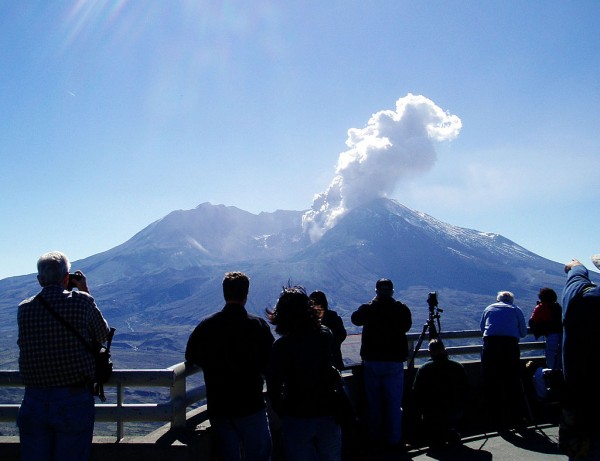Increasing Earthquakes in Mount St. Helens Indicate Volcano Recharging
| Aaron Case | | May 07, 2016 06:18 AM EDT |
(Photo : Getty Images) Scientists noticed increasing earthquakes in the Mount St. Helens volcano over the last two months.
Scientists monitoring Mount St. Helens noticed a recent increase in seismic activity in the volcano, but there is no indication that there will be another eruption any time soon.
The US Geological Survey (USGS) - the organization that monitors the Mount St. Helens volcano - has had a complete system of seismic monitoring stations in place on the mountain since 1980, when the volcano's most disastrous eruption occurred.
Like Us on Facebook
Since the 1980 eruption, scientists have recorded millions of earthquakes in the volcano. Recently, the seismic events are happening more frequently.
"Earthquake rates have been steadily increasing since March, reaching nearly 40 located earthquakes per week," the report said. The USGS monitoring system measured over 130 earthquakes in the past two months.
There is no immediate cause for alarm, though. Scientists said in the same study that "there are no signs of an imminent eruption...recharge can continue for many years beneath a volcano without an eruption."
Similar increases in seismic activity on the volcano occurred in 2013 and 2014, and researchers said "recharge swarms in the 1990s had much higher earthquake rates and energy release."
In an article for Wired, Denison University geosciences professor Erik Klemetti noted that Mount St. Helens "has had a lot of recharge events - and most of these don't directly lead to an eruption."
Mount St. Helens' most recent eruption happened between 2004 and 2008, but a 2009 book published by the USGS said that the magma produced indicated that the activity was left over from the 1980 eruption.
The 1980 eruption shot ash well over 1,000 feet into the sky, killing 57 people and causing extensive damage. More than 900,000 tons of ash was removed from the surrounding area, following the blast.
TagsMount St. Helens, Volcano, earthquake, USGS, seismic activity, Mount St. Helens volcano
©2015 Chinatopix All rights reserved. Do not reproduce without permission
EDITOR'S PICKS
-

Did the Trump administration just announce plans for a trade war with ‘hostile’ China and Russia?
-

US Senate passes Taiwan travel bill slammed by China
-

As Yan Sihong’s family grieves, here are other Chinese students who went missing abroad. Some have never been found
-

Beijing blasts Western critics who ‘smear China’ with the term sharp power
-

China Envoy Seeks to Defuse Tensions With U.S. as a Trade War Brews
-

Singapore's Deputy PM Provides Bitcoin Vote of Confidence Amid China's Blanket Bans
-

China warns investors over risks in overseas virtual currency trading
-

Chinese government most trustworthy: survey
-

Kashima Antlers On Course For Back-To-Back Titles
MOST POPULAR
LATEST NEWS
Zhou Yongkang: China's Former Security Chief Sentenced to Life in Prison

China's former Chief of the Ministry of Public Security, Zhou Yongkang, has been given a life sentence after he was found guilty of abusing his office, bribery and deliberately ... Full Article
TRENDING STORY

China Pork Prices Expected to Stabilize As The Supplies Recover

Elephone P9000 Smartphone is now on Sale on Amazon India

There's a Big Chance Cliffhangers Won't Still Be Resolved When Grey's Anatomy Season 13 Returns

Supreme Court Ruled on Samsung vs Apple Dispute for Patent Infringement

Microsoft Surface Pro 5 Rumors and Release Date: What is the Latest?











